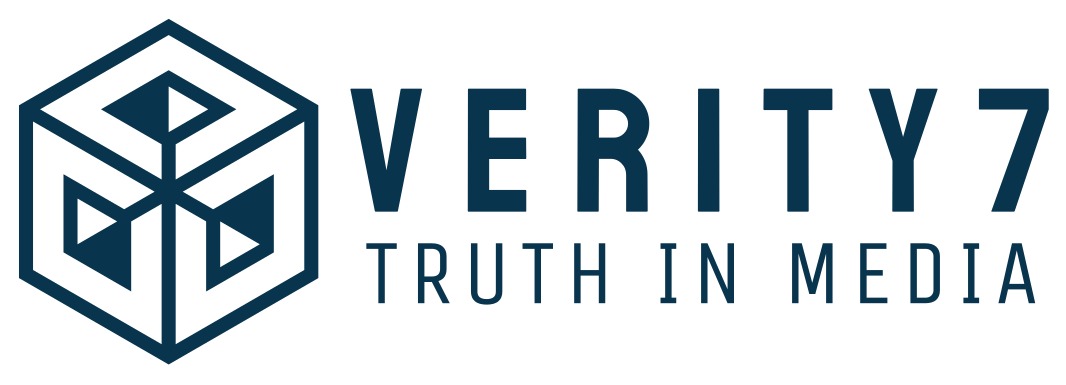In today’s digital media landscape, it seems that misinformation, disinformation, and outright lies have become weaponized in terrifying fashion. Hate is sold wholesale through carefully targeted messaging campaigns. And, thanks to the rise of movements like Qanon and MAGA, bullies everywhere have been empowered to make others miserable in ways we had never imagined.
One of the major contributors to this environment is the apparent inability of large percentages of the American population to exercise even minimal critical thinking skills. Certain constituencies, typically associated with right wing politics, seem ready to believe any utterance from their small, select group of political leaders no matter how incorrect that utterance may seem to others.
Retreat to “Certainty”
Is it possible that too many people have been overloaded with unfamiliar information; and that they cannot absorb it? Perhaps the overloaded brain tends to reject all uncomfortable news in a retreat to certainty. For it is difficult to understand, in lieu of total information overload, how anyone can fail to differentiate, for instance, a life-saving vaccine from a hoax, nor a Presidential candidate from a disgraceful tub of toxic stew draped roughly in a suit.
Have we reached a natural limit on information overload?
Is it possible some of us have seen or heard so many contradictory, baffling stories coming from every direction, on virtually every subject, that some of us may have lost our way? The range of “disinformation-based” stories seems almost universal. And many Americans seem to have become confused about what constitutes an established fact versus what represents mere suspicion.
By way of example: even in 2023 we see election deniers (Donald Trump, Kari Lake) continuing to say both the 2020 and 2022 elections were “stolen”. These are churlish, inept attempts to avoid having to accept loss with dignity. But their public profiles and persistence give their arguments weight. Even several major indictments seem only to fuel their fervor.
Puzzling Evidence
But at the same time, we have other contributing factors. And some of them come almost literally out of left field.
For instance: in the fall of 2023 we have NASA suggesting they have at least observational evidence that non-human-engineered craft are flitting about our skies and especially above our sensitive defense facilities. And we have also received anecdotal information that Artificial Intelligence already may have gotten out of the cage: recently the Pentagon distributed, then denied a story about how, in a test, an AI-guided drone attacked and killed its operator because it felt the operator was getting in the way of its mission.
To be sure, none of the above have anything in common except that they are weird, baffling, and widely disseminated.
Erosion of Certainties
How many Americans can accept what facts look like, and how they differ from lies?
Mental laziness, unfortunately, has long been a hallmark of a large segment of the voting population. That we might enjoy even a semi-enlightened, democratic way of life is made a mockery by the prevalence of anti-science, quasi-religious dogma. We know the GOP has become virtually an embassy for Qanon and Q-adjacent canards about election-theft and cannibalistic elites. We know these dangerous fantasies see wide distribution via social media, and that they play out against a backdrop of proto-Christian evangelism, anti-choice Catholics and dark money billionaires out to destroy democracy in the US.
But what can we say about the root cause of these weird tricks?
Is it possible there’s a reasonably large segment of the US population that has abandoned reason for fantasy because they cannot process the amount and type of information they’re receiving? Are they overloaded, confused, or worried? It is also possible that information overload itself has been used as a cudgel by cynical manipulators as they seek to “debunk” fact and replace it with their own form of tailored fiction.
The Attosecond
In astrophysics and cosmology, we now must fully accept that the nature of reality itself, ultimately, is an open question. Concepts (admittedly not very new) like quantum entanglement and what Einstein called “spooky action at a distance” turns Newtonian physics on its head. These concepts are now no longer confined to the groves of academe, but available to all via search engines. And every month, sometimes every week it seems, we are confronted with new, strange findings about the basic structures of physical existence.
For instance, in October 2023, we heard that three physicists at the University of Ohio won a Nobel Prize for having developed a laser beam that fires light in almost incredibly brief intervals known as “attoseconds”. This is done in order to measure subatomic behaviors that are baffling enough in and of themselves. But what is an attosecond? Apparently it is a time interval equal to one billionth of a nanosecond. I am reasonably conversant with science generally, but must admit to having been shocked to find that we can even understand such a measure, never mind engineer pulses of light that last only that long.
It’s tempting to suggest the universe is hopelessly mysterious, and that we are under no obligation to accept what anyone says about it (or by extension, what anyone says about anything).
The Big Messages
Because for those who hear little and understand less, the big message is:
Nothing is as it seems.
To the unsophisticated observer, this statement will suggest that all facts are questionable. And that there may even be room for what Kelly Anne Conway called “alternative facts”—quite as if you can assert that your baseball team scored ten runs and won the game when in fact, they scored only two runs and lost. But “nothing is as it seems” permits a convenient elision past societal norms as well as baseball games—substituting evidence with fantasy.
Again roughly in the realm of cosmology, we now have the US government admitting that UFOs (now called UAPs) have been observed behaving in non-aerodynamic ways that no human technology can achieve; and that they are as reliably “real” as the daisies on your lawn. Sure, 85% of reports are nonsense and we all know that. But when the US, long in the business of pretending UFOs were hallucinatory, or glistening birds, or swamp gas, finally admits they have a truckload of evidence that suggests UAPs are both unknown and impossible to ignore, it means we have gone through a sort of looking glass.
The message here is:
We’ve been lying all along.
In politics, we have seen the replacement of mechanical voting machines with digital vote tabulators that rely on paper ballots, scanners, and algorithms. I won’t get into the ways paper ballots can be mishandled. They can be! And in ways that those big metal (un-networked) booths cannot be. I won’t dignify the claims of Trumpy election deniers because they seem to me patently absurd. But I will say that I can understand how a casual observer might consider vote-tabulation software corruptible in ways that old-fashioned vote tabulation is not. The fact is that vote manipulation is more possible with e-voting than without.
The message here is:
You can’t trust the system.
There are additional calls to disbelieve prevailing narratives, regardless of plausibility. For instance, even if we accept that a global pandemic was never a hoax, we must also grapple with questions about its origin. By that I mean we are hearing competing official narratives about where Covid originated. One report has it coming out of a Wuhan “wet market” (aka butcher shop with wild animal carcasses). A competing report has it emerging, probably by accident, from a Wuhan bio-engineering lab.
The pandemic may be over by and large, but the damage to public discourse has already been done.
Three big shocks have been visited upon the masses, largely via digital media—either by direct messaging or having been made available for the armchair skeptic via the Google machine. Information overload has delivered the following messages:
Nothing is as it seems.
We’ve been lying to you all along.
You can’t trust the system.
My argument is that the above narratives have succeeded in undermining trust in any and all expertise regardless of the quality of the expertise. This, coupled with newfangled digital microtargeting techniques, deliver a hammer blow to rational discourse. Deploying digital analytics, bad actors locate vulnerable audiences, and feed those audiences lie after lie until the target constituents are weary and prepared to believe almost anything. In a world that wobbles uncertainly, a certain percentage of consumers will reliably throw out the baby and keep the bathwater.
Make no mistake: digital technology itself plays a role. Before digital search, and before digital media targeting, all three of these major uncertainties were already at least suspected if not known. Even electronic voting itself pre-dates the proliferation of social media.
Too Much Availability?
Until recently, esoteric ideas and difficult concepts were typically debated by people who specialized in the field. Esoterica was hardly the stuff of common discourse. And without digital search and digital microtargeting, this esoterica very well may have remained obscure.
But today anyone can access nearly all available information on almost any subject, almost at will. The armchair skeptic may lack the ability to recognize fact from fancy, but they can certainly receive messages from those who tell untruths for equity gain or power, as the case may be.
In brief: in a digital information environment, the impressionable are easily victimized by the cynical.
We in the US are dangerously close to losing what we have left of democracy under a truckload of hate and ignorance dumped out by bad actors and troll farms. And the tech giants (aka social media platforms) who traffic in the sale of vulnerable audiences to cynical manipulators make bank in this environment.
I am all in favor of companies making money on the internet. The only objection I have is that the byproduct of the social media business model seems to be either chaos, or fascism.
Digital technology is a neutral phenomenon—it can be good or bad depending on who is using it for what. But with the emergence of puzzling evidence into the mainstream, it’s a sure thing that the substitution of damaging fantasies for difficult facts has become much easier.
Information overload has created a loophole in the topology of truth. This loophole is exploited in ways that are most worrisome. But all is not lost. If we can dedicate ourselves to truth in media, and learn to recognize disinformation when we see it, then we may also develop tools to support truth in an uncertain world.
Verity7 pioneers truth in media, arming organizations against disinformation. We assess threats, train through Prevency’s SaaS module, and provide a clear roadmap for preparedness. Elevate your resilience with Verity7 – where truth meets action.





